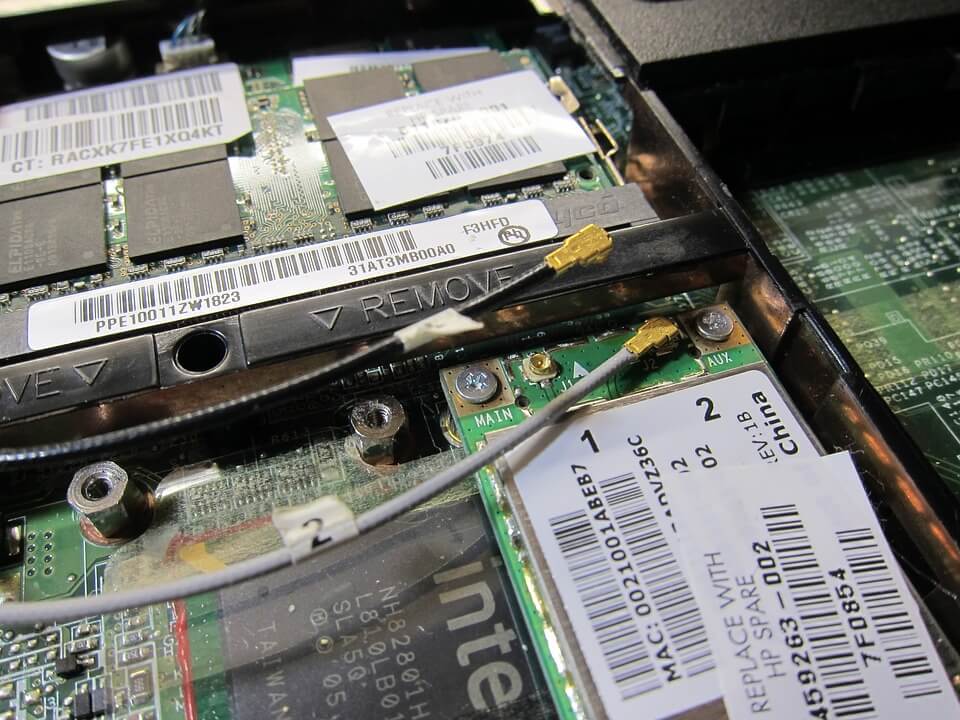Business
How RFID technology benefits retail
RFID technology works via radio frequency, tracking almost every bit of information there is in real time and making tracking businesses more efficient.

Whether as a customer or as a business leader, you have almost certainly come into contact with RFID technology before today, and possibly without realizing it. Radio frequency identification has been around for a while, but it’s versatile enough that we’re even now finding novel ways to use it to our advantage.
The technology is deceptively simple: Make Use Of explains, RFID tags — or “chips” — contain a small circuit with data on it along with an antenna, which communicates with a separate reader — or “interrogator.”
At their simplest, RFID chips perform the same function as a barcode: They provide each product with a unique identifier. As you might have guessed, though, identification only scratches the surface of what this technology can help you accomplish in retail.
Real-time data
Data informs everything that happens in retail and the greater world of commerce. But industry movers and shakers are used to dealing with information delay. Retailers must gather information, order it and render it into some kind of actionable format. That can sometimes take the time we just don’t have in such a fast-paced environment. During peak shopping times — both weekly and throughout the year — having access to information as quickly as possible is vitally important.
Thanks to RFID technology, data gathering can now happen practically anytime and at every step of the supply chain. Taking stock of inventory, for example, has historically been such a time-consuming task that in the past most retailers chose to do it just once or twice per year. This process, and many others, can now happen near-instantly. We’ll talk more about other types of data in a moment.

RFID technology allows a company to track inventory via barcodes. (Source)
Efficiency and quality control
As mentioned, RFID chips and barcodes are similar up to a point. Both can help you track inventory as it moves around, including variations on a single product. Think about retail environments where you might stock multiple colors or multiple styles of dozens of items, for example.
But consider the obvious limitation of barcodes: They require individual handling and scanning, oftentimes with a stationary scanning station or handheld wand — both of which are “line-of-sight” devices. RFID chips, on the other hand, can be handled in bulk. You can tell with a single scan how many of each SKU just landed on your dock, for example, and your workers will enjoy far greater efficiency because they’ll have to perform far fewer individual “touches” on your products as they arrive, as they get moved about and as they are eventually sold.
Here’s another related benefit: The world needs less and less human labor these days — and it’s all thanks to technologies like RFID tags. But the benefits here go beyond cutting payroll hours. Tasks like stock replenishment and inventory management require a lot of human intervention, so turning to RFID tags can greatly reduce error in those processes.
The arrival of damaged goods to your warehouse or store is another cause for concern and another source of lost time and profits. With RFID tags on your side, you can speed up even this thankless part of the retail process and ensure you get functional merchandise en route again, either from your supplier or from a nearby store.
All the above advantages add up to one solid conclusion: RFID tags allow you to do more work with far less effort.
Consumer insights and research
Some of the other data points you can dive into with the help of RFID concern customer behaviors and insights. You already know each RFID tag contains several points of data, including product numbers and information about each SKU.
But consider the benefits of coupling that information with customer data in real-time. At checkout, it’s now possible to record the type of product exiting your store — for obvious inventory management reasons — and then combine it with customer data like a method of payment and whether they are repeat customers. Chron reports it’s even possible to use RFID tags to keep track of, and then act on, how your customers move through your store.
Insights like these can provide you with a valuable peek into the minds and wallets of your most valuable customers. You’ll be able to reconsider how you arrange your store and even sharpen your marketing endeavors based on how customers interact with your merchandise and how frequently they return.
Security
As we mentioned earlier, you don’t need to touch and scan each RFID tag-enabled product — rather, you can read each tag at a distance of 20 to 30 feet, meaning you can have a top-down, bird’s-eye view of a far larger section of your retail presence and actively monitor your inventory without direct intervention.
Because of this clear advantage, it’s not uncommon for retailers to install RFID interrogators throughout their physical spaces. Sawyer Howitt notes in an article on Medium, that this provides an “always-on” method for keeping an eye on your inventory, which can also help reduce shoplifting.
Catching on
Yes, RFID tags have been around for a while. But all that’s old is new again in the march of technology. In 2016, 75 percent of polled retailers indicated they did already, or had plans to, implement RFID for their stores. More impressively, according to a recent Kurt Salmon study, those same retailers indicated an improvement in inventory accuracy of, on average, 25 percent.
Why leave money on the table when you could instead invest in a technology that’s fast approaching a cost of one cent per unit, according to Nano Dimension? If popularity isn’t enough motivation, the promise of a cost-effective reduction of your operating expenses certainly should be.
—
DISCLAIMER: This article expresses my own ideas and opinions. Any information I have shared are from sources that I believe to be reliable and accurate. I did not receive any financial compensation in writing this post, nor do I own any shares in any company I’ve mentioned. I encourage any reader to do their own diligent research first before making any investment decisions.

-

 Crypto1 week ago
Crypto1 week agoEuropean Selling Drives Bitcoin’s November Slump
-

 Cannabis7 days ago
Cannabis7 days agoRemexian Wins Legal Battles Amid German Cannabis Licensing Dispute
-

 Crypto2 weeks ago
Crypto2 weeks agoAnalysts Warn Bitcoin’s Rally May Fade as MicroStrategy Signals Caution and Liquidity Weakens
-

 Fintech3 days ago
Fintech3 days agoItaly Issues First Natively Tokenized Minibond on Public Blockchain


























You must be logged in to post a comment Login